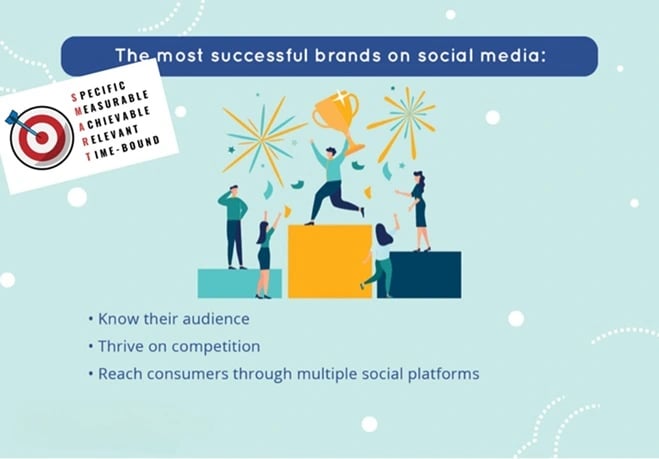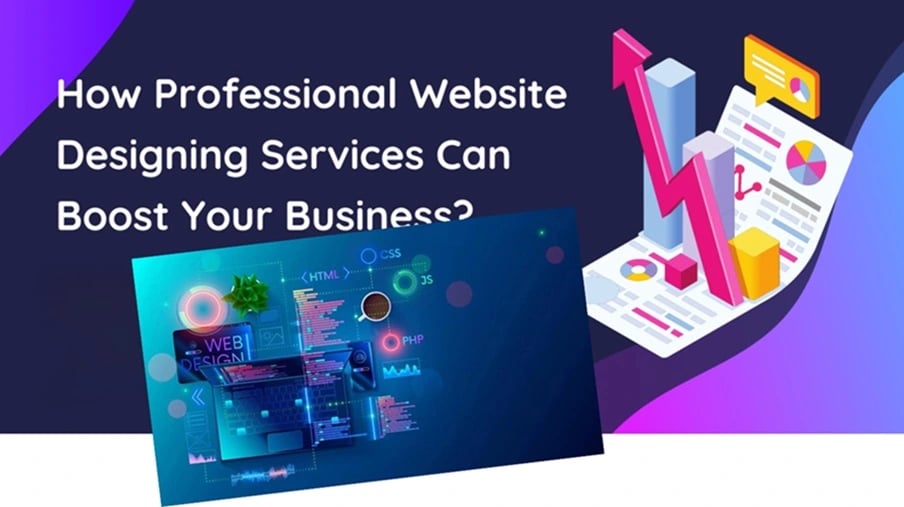
You can significantly enhance your business’s success by effectively identifying and engaging the right audience. Understanding your customers’ behaviors and preferences is crucial for crafting impactful marketing campaigns that generate quality leads. At Mister Nguyen Agency, we specialize in leveraging innovative social media strategies and compelling design to connect with your target audience. In this blog post, we’ll share valuable tips and real-world campaign examples that demonstrate how you can optimize your website and brand presence to attract the right customers.
Key Takeaways: Tips for Finding the Right Audience
1. Understand your customers through targeted market research.
2. Use analytics to refine your website’s audience reach.
3. Create compelling content for specific reader personas.
4. Leverage social media insights to engage potential leads.
5. Design your brand messaging to resonate with target audiences.
6. Monitor real campaign performances for continuous improvement.
Understanding Your Audience

Your ability to connect with your customers hinges on how well you understand your audience. Knowing who your target market is and what influences their purchasing decisions can dramatically enhance your marketing strategies. This understanding enables you to tailor your content and campaigns effectively, ensuring they resonate with the right people. When you grasp the fundamental aspects of your audience, such as their demographics, interests, and behaviors, you can create a more persuasive brand narrative that fosters trust and engagement.
Defining Target Audiences
Target audiences are not a one-size-fits-all concept; they encapsulate specific segments of consumers characterized by measurable attributes such as age, location, and purchasing behavior. By honing in on your target audience, you can develop focused marketing efforts that cater to their unique needs and preferences. For instance, if your business specializes in fitness apparel, understanding that your primary audience consists of active women aged 18-35 can help you design effective campaigns that directly appeal to their lifestyle choices.
The Importance of Audience Insights
Any successful marketing strategy begins with solid insights into your audience. Understanding what drives customers to choose your brand over others can provide invaluable data that informs your initiatives. According to HubSpot’s 2024 State of Marketing report, only 65% of marketers have high-quality data about their target audience. This gap presents an opportunity for your business to invest in tools like HubSpot Analytics to gather demographic information, analyze customer behavior, and track marketing campaign performance. By leveraging these insights, you can ensure that your website and social media content aligns closely with your customers’ expectations.
Audience insights allow you to craft campaigns that are not only relevant but also compelling. The more detailed your understanding of who your customers are, the better positioned you will be to create messaging that inspires action, generates leads, and ultimately drives sales. By analyzing how your audience interacts with your brand, you can identify gaps and opportunities for improvement, effectively enhancing your design brand and solidifying your position in the marketplace.
Segmenting Your Audience

Even the most innovative products can miss the mark if they’re not targeted effectively. Understanding the various segments of your audience allows you to craft tailored marketing strategies that resonate with specific groups. By delineating these segments, you can direct your efforts in a way that is both strategic and effective in converting leads into loyal customers. With the insights gathered from HubSpot Analytics and other tools, you’ll be better equipped to identify which audience segments will benefit most from your business offerings.
Demographic Segmentation
Your primary focus should be on gathering demographic information such as age, gender, income, and education level. This foundational data helps you understand who your potential customers are and what unique interests they might hold. For instance, if you’re operating a design brand that specializes in eco-friendly products, knowing that your target audience is predominantly young, environmentally-conscious females could influence your marketing channels and messaging strategy.
Your demographic segmentation strategy should integrate multiple data sources to obtain a comprehensive view of your audience. Analyzing trends in purchasing behavior through analytics tools can also unveil valuable insights, allowing you to tailor products and services that meet their needs directly. Bear in mind, understanding the demographics of your audience will pave the way for further segmentation methods that deepen your connection with them.
Psychographic Segmentation
For a more nuanced understanding of your customers, you need to examine into psychographic segmentation, which examines their values, interests, lifestyles, and beliefs. Unlike demographic data that provides surface-level characteristics, psychographics reveal the motivations behind customer behavior. For example, if your website promotes adventure sports, identifying customers who value fitness and outdoor activities could help you refine your advertising campaigns to align with their passions.
For instance, brands like Patagonia successfully leverage psychographic segmentation by targeting environmentally-conscious consumers who prioritize sustainability. By aligning their messaging with the values of their audience, they create a strong emotional connection that translates into customer loyalty and advocacy.
Behavioral Segmentation
Psychographic data is enhanced through behavioral segmentation, which involves categorizing your audience based on their actions, such as purchasing habits, brand interactions, and usage patterns. This information helps you create more effective marketing strategies, wielding insights like seasonal shopping trends or customer loyalty levels to make informed decisions. For example, deploying special offers to frequent buyers can encourage repeat business while also building your customer database.
Audience behaviors can fluctuate over time, so it’s critical to continuously analyze engagement metrics and adapt your strategies accordingly. Utilizing analytics tools allows you to monitor customer interactions across your website and social media platforms, helping you to identify which tactics work best and when to pivot your approach.
Geographical Segmentation
One often-overlooked aspect of audience segmentation is geographical segmentation. This method involves classifying your audience based on where they live. Understanding geographical nuances enables your business to tailor its marketing strategies to specific regions, factoring in local culture, climate, and interests. For instance, if you offer seasonal promotions for travel packages, knowing where most of your customers are located can increase the effectiveness of those campaigns.
Segmentation allows Mister Nguyen Agency to develop targeted messaging that resonates with potential leads across different locations. Engaging with your audience in context—be it a regional trend or cultural event—will ultimately enhance your brand awareness and make your outreach more personal and effective.
Researching Audience Preferences

After identifying your target audience, the next crucial step is researching their preferences. Understanding what your customers value and desire is vital for tailoring your marketing messages effectively. You can begin this process by exploring how to get the right audience for my services, goods and ideas. This approach ensures that you become acquainted with your audience’s specific needs and interests, which can lead to more successful engagement and conversion rates.
Utilizing Analytics Tools
With the wealth of data available today, using analytics tools can significantly enhance your understanding of audience preferences. Platforms like HubSpot and Google Analytics provide valuable insights about your website visitors, including demographics, behavior patterns, and engagement metrics. For instance, you can analyze traffic sources to determine what channels are most effective for reaching your customers, allowing you to optimize your campaigns accordingly.
Additionally, these tools allow you to monitor the performance of specific pages and content, enabling you to identify what resonates most with your audience. As you gather this information, you’ll be better equipped to tailor your website and marketing strategies to better align with audience expectations, ultimately converting more leads into satisfied customers.
Conducting Surveys and Polls
Audience surveys and polls are another excellent method for gathering direct feedback from your customers. By actively seeking their opinions, you can glean insights into their preferences, pain points, and ideas. This data is invaluable; it not only informs your marketing tactics but also helps in honing your products or services to better meet customer needs.
Analytics show that businesses that engage their customers through surveys often see an increase in customer loyalty and satisfaction. Using tools like SurveyMonkey or Google Forms, you can create targeted surveys that ask specific questions about your products, services, or overall brand experience. Make sure to keep the questions concise and approachable to encourage maximum participation.
Engaging with Focus Groups
Audience engagement through focus groups can provide deep insights that surveys might miss. By gathering a small group of your target audience, you can facilitate discussions that reveal their thoughts and feelings about your business, products, or services. This qualitative feedback is crucial in helping you understand not just what your customers want, but why they want it.
Researching your audience through focus groups also allows for dynamic interaction, offering opportunities to explore topics in greater depth. Participants often share unique perspectives that can uncover aspects of your brand that you had not previously considered, leading to innovative ideas for product development and marketing strategies.
Crafting Effective Messaging
Now that you understand the importance of identifying your target audience, the next step is crafting messaging that resonates with them. Effective messaging goes beyond just presenting your product or service; it encapsulates the values and desires of your audience while demonstrating how your business can fulfill their needs. The key lies in segmenting your audience based on their specific traits and tailoring your content based on these insights, which can boost your conversion rates and drive meaningful engagement across your website and social media platforms.
Tailoring Content to Audience Segments
On the path to creating compelling content for your business, tailoring your messaging to different audience segments is crucial. You might discover that audience members exhibit varied interests, challenges, or motivations. For example, a tech-focused segment may appreciate in-depth articles and tutorials, while lifestyle-oriented customers might prefer quick tips and engaging visuals. By dissecting your audience into distinct segments, you can craft tailored content that truly speaks to their specific needs, increasing the likelihood of converting them into loyal leads.
The Role of Language and Tone
Any effective messaging strategy recognizes the power of language and tone in shaping perception. The words you choose and the tone you adopt should align with the values and preferences of your audience. For instance, using a casual tone may resonate well with younger audiences, whereas a more professional and formal language might be suitable for a corporate clientele. It’s imperative to maintain consistency in your messaging across various touchpoints, whether it’s on your website, social media, or marketing materials.
For instance, if you are targeting tech-savvy customers, using industry jargon and a friendly tone might create a connection. In contrast, if your audience comprises more traditional consumers, a straightforward and respectful tone will likely yield better results. Understanding these nuances can enhance your communication effectiveness and build stronger relationships with your audience.
Utilizing Visuals to Engage
Language plays a significant role in communication, but visuals are equally imperative in capturing your audience’s attention. Statistics show that visuals can increase engagement on social media by up to 650%, making them a vital component of your messaging strategy. When choosing visuals for your campaign, consider what resonates with your audience—this may include infographics, videos, or captivating images that reflect their interests and aspirations. Tailoring your visuals not only enhances your brand’s identity but also ensures that your messaging is more memorable and impactful.
Understanding your audience’s preferences and incorporating relevant visuals alongside your written content can significantly boost your engagement. Visual storytelling can encapsulate your brand’s message more powerfully than text alone. By strategically aligning your visual content with your target audience’s interests and values, you’re likely to drive further interaction with your brand across multiple platforms, including your website and social media channels.
Testing and Optimizing Campaigns
Unlike many businesses that overlook the importance of testing and optimization, you have an opportunity to significantly enhance your marketing efforts and improve engagement with your target audience. Every campaign should start with the understanding that your initial efforts may need refining based on how your audience responds. By systematically testing different aspects of your marketing initiatives, you can discover what resonates most with your customers and leads to better overall performance.
A/B Testing for Audience Engagement
Engagement is a critical factor in the success of any campaign, and A/B testing provides a practical approach to tap into your audience’s preferences. This method involves creating two variations of a campaign element—such as an email subject line, ad copy, or landing page—and measuring which one achieves better results. By isolating one variable to test at a time, you will unearth insights that can guide your decisions on messaging, design, and targeting in the future.
The data from this testing can provide crucial information about the demographics and behaviors of your audience, allowing you to tailor your approach for maximum impact. When implemented effectively, A/B testing helps identify not just what works but also why it works, giving your campaigns a powerful foundation as you strive to improve your connection with potential customers.
Analyzing Campaign Performance
Engagement extends beyond initial interactions; it encompasses how well your campaigns drive desired outcomes. Every marketing campaign should be followed by a thorough analysis of its performance metrics. By assessing key data points—such as click-through rates, conversion rates, and return on investment—you can gauge the overall effectiveness of your campaigns. Utilize tools like HubSpot Analytics or Google Analytics to gather valuable insights about your audience’s engagement with your content.
For instance, analyzing data over time will allow you to identify trends that inform future strategy. If you notice that certain messages resonate more during specific times of the year or with certain demographics, you can adjust your campaign schedules and content to leverage those insights effectively.
Implementing Feedback Loops
An vital part of optimizing your campaigns involves creating feedback loops that involve collecting ongoing input from your audience and stakeholders. This could involve surveys, feedback forms, or social media engagement that allows you to understand what your customers appreciate or find lacking in your offerings. By actively soliciting feedback, you not only make your audience feel heard but also gather invaluable information that can shape your future marketing strategies.
Implementing these feedback loops means you’re not just operating in a vacuum; you’re creating a dynamic system where you can continually refine your approach based on real-world responses and changing market conditions. This adaptability is vital for long-term success and helps ensure that your campaigns remain relevant and engaging to your target audience.
Real-World Campaign Examples
Keep in mind that understanding your audience isn’t just theoretical; real-world campaigns demonstrate how targeted strategies can effectively engage customers and drive results. Successful campaigns utilize insights gathered from data analytics to craft messages and offerings that resonate with their intended audience. By leveraging various marketing channels, you can attract the right customers, ultimately leading to increased leads and conversions for your business.
Successful Social Media Campaigns
The power of social media as a marketing tool cannot be overstated. Brands like Nike and Sephora have successfully crafted campaigns that deeply resonate with their audiences by focusing on specific demographics and interests. For instance, Nike’s “Dream Crazy” campaign not only featured well-known athletes but also highlighted relatable stories that appeal to everyday sports enthusiasts. This strategic alignment with customer values and aspirations garnered millions of impressions, greatly enhancing brand loyalty.
When executed well, social media campaigns can yield impressive engagement rates—Nike, for example, reported a 30% increase in online sales following its campaign launch. Similarly, Sephora’s targeted ads on platforms like Instagram showcase personalized product recommendations based on user behavior, creating a relatable experience for prospective customers and driving traffic back to their website.
Effective Email Marketing Strategies
For your business to convert leads into loyal customers, employing effective email marketing strategies is necessary. A well-timed email campaign can lead to a significant return on investment—research shows that for every $1 you spend on email marketing, you can expect an average return of $42. Companies like Grammarly and Airbnb have optimized their email strategies by segmenting their audiences, allowing them to send personalized content that captures attention and prompts engagement.
RealWorld examples of effective email marketing illustrate how you can engage your audience with tailored messaging. Grammarly, for instance, sends progress updates and personalized insights that encourage users to improve their writing skills. This not only adds value to the customer experience but also nurtures leads, fostering a stronger connection between your business and your audience.
Notable Influencer Collaborations
Effective influencer collaborations can significantly enhance your brand’s reach and visibility. Brands such as Daniel Wellington and Fashion Nova have successfully leveraged influencers to spread awareness and drive sales. By partnering with individuals who have a dedicated following in specific niches, you can position your products or services in front of highly engaged and relevant audiences. For example, Daniel Wellington’s approach to influencer marketing has contributed to its rapid growth, as influencers showcase the brand’s watches in their lifestyle content, naturally integrating the product into the narrative.
Another strategy that brands utilize for influencer collaborations is developing long-term partnerships, which fosters authenticity and consistency in messaging. This can lead to more trustworthy interactions with your audience, encouraging them to consider your brand when making purchasing decisions. As you strategize your marketing efforts with Mister Nguyen Agency, explore collaborations that align with your business values and connect with your target customers for meaningful engagement.
To Wrap Up
Hence, understanding how to find the right audience for your business is crucial in developing effective marketing campaigns that resonate with your customers. By utilizing tools like HubSpot Analytics, creating reader personas, and analyzing social media insights, you can gather valuable data that informs your marketing strategy. When you target your audience with tailored messaging, not only do you enhance engagement, but you also increase your chances of converting these interactions into leads for your business.
At Mister Nguyen Agency, we recognize that each campaign you run should reflect a deep understanding of your audience. This knowledge allows you to craft compelling content and design a brand experience that speaks to the interests and needs of your customers. By applying these tips and learning from successful campaigns, you can position your brand for growth and ensure that your website effectively attracts and retains the audience you aim to serve.











